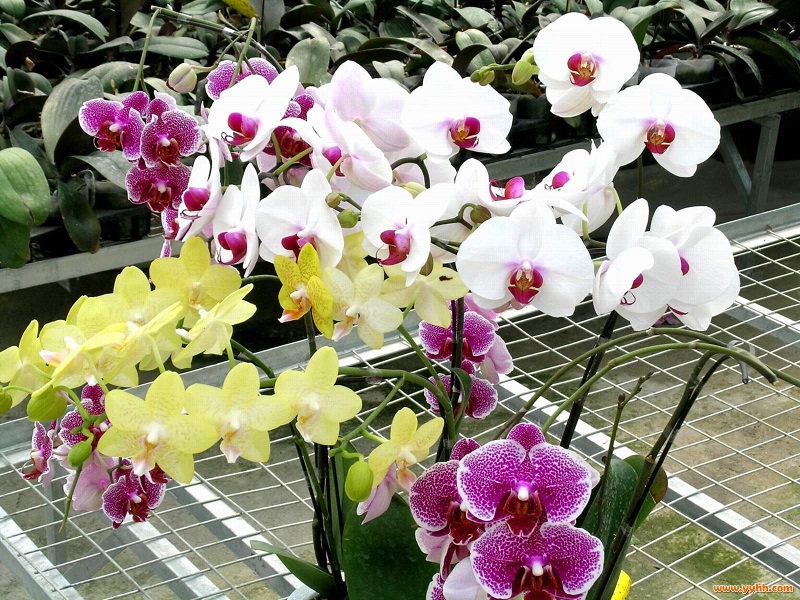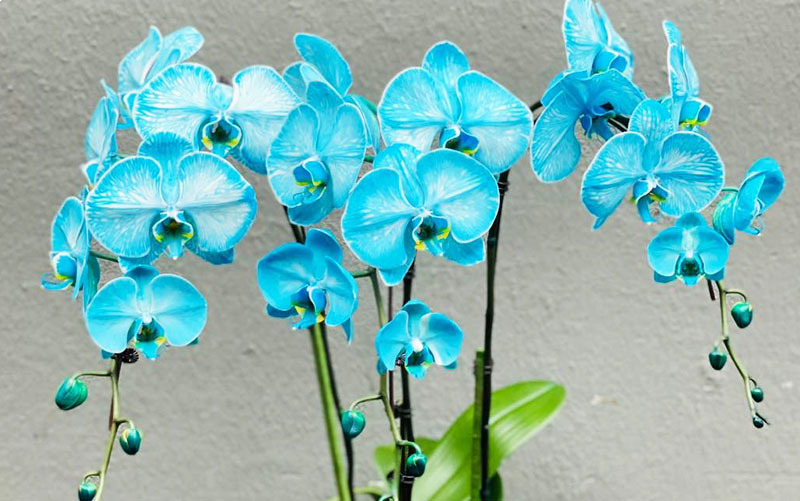Phalaenopsis orchids, also known as Moth Orchids, are one of the most popular and widely cultivated types of orchids. Known for their stunning, long-lasting flowers and adaptability to indoor environments, these orchids are a favorite among gardeners and plant enthusiasts. This guide provides a comprehensive overview of Phalaenopsis orchids, including their botanical characteristics, habitat, cultivation practices, propagation methods, common issues, and the fascinating world of hybrids and varieties.
Botanical Characteristics of Phalaenopsis Orchids
Taxonomy and Classification
Phalaenopsis orchids belong to the Orchidaceae family and the Phalaenopsis genus. Notable species include:
- Phalaenopsis amabilis
- Phalaenopsis aphrodite
These species are highly valued for their distinctive flower shapes and vibrant colors.
Physical Description
Leaves: Broad and ovate with a glossy green surface.
Flowers: Rounded, butterfly-like petals in colors such as white, pink, purple, and yellow, often with intricate patterns.
Roots: Aerial roots, which can appear greenish or silvery.

Growth Habit
Phalaenopsis orchids are epiphytic, growing naturally on trees and other surfaces in their native habitats. They exhibit a monopodial growth pattern, where the plant grows upward from a single stem.
Habitat and Distribution
Native Range of Phalaenopsis Orchids
Phalaenopsis orchids are native to Southeast Asia, including Indonesia, the Philippines, and Malaysia. They thrive in tropical and subtropical climates, often growing in the shaded understorey of forests.
Adaptations to Environment
These orchids are adapted to varying light conditions and can thrive in lower light levels, similar to their natural forest habitats. Their epiphytic nature allows them to absorb moisture and nutrients from the air and surrounding surfaces.
Cultivation and Care of Phalaenopsis Orchids
Environmental Requirements
Light: Phalaenopsis orchids require bright, indirect light. Direct sunlight can harm the leaves, so opt for filtered light conditions.
Temperature: Ideal temperatures range from 65-85°F (18-29°C). Maintaining a temperature differential between day and night helps encourage flowering.
Humidity: They prefer a humidity level of 50-70%. Use humidity trays or mist the plants regularly to maintain adequate moisture.
Watering and Fertilization
Watering: Water when the top of the potting medium feels dry. Ensure thorough drainage to prevent root rot.
Fertilization: Use a balanced orchid fertilizer. Feed every 2-4 weeks during the growing season and reduce feeding during the dormant period.
Potting and Repotting
Potting Media: Use well-draining media like bark, sphagnum moss, or perlite. Good drainage is essential for healthy roots.
Repotting: Repot every 1-2 years or when the potting medium deteriorates. Look for signs such as roots growing out of the pot or reduced plant vigor.
Propagation Techniques for Phalaenopsis Orchids
Division
Divide orchids when they become too large or new growths can be separated. Ensure each division has roots and multiple growth points for successful propagation.
Keikis (Offsets)
Keikis are small plantlets that grow from the parent plant. They can be separated and potted once they have developed their own roots.
Seed Propagation
Seed propagation is less common due to the specialized conditions required for germination. This method often involves laboratory techniques to achieve successful results.
Common Issues and Pests in Phalaenopsis Orchids
Pests
Common pests include aphids, spider mites, and scale insects. Regular inspection and treatment with insecticidal soap or neem oil can help manage infestations.
Diseases
Phalaenopsis orchids can suffer from fungal and bacterial infections, such as leaf spots or root rot. Ensure good air circulation and avoid overhead watering to minimize disease risk. Treat infections promptly with appropriate fungicides or bactericides.
Environmental Stress
Signs of stress include yellowing leaves, wilting, or flower drop. Address issues such as improper watering, inadequate light, or temperature fluctuations to restore plant health.

Hybridization and Varieties of Phalaenopsis Orchids
Hybrids
Phalaenopsis hybrids are created by crossing different species or varieties to achieve unique flower forms and colors. These hybrids are popular for their diverse and appealing traits.
Varieties
Various species within the Phalaenopsis genus offer distinct characteristics, contributing to their popularity among collectors and enthusiasts. Rare and unique varieties are often sought after in the orchid market.
Phalaenopsis orchids are a delightful addition to any plant collection, offering beautiful flowers and relatively straightforward care requirements. By understanding their botanical characteristics, environmental needs, and common issues, growers can enjoy the vibrant blooms of these orchids for many years. For further exploration, numerous resources are available, including books, online forums, and local orchid societies. With the right care and knowledge, Phalaenopsis orchids can thrive, bringing elegance and beauty to your home or garden.
